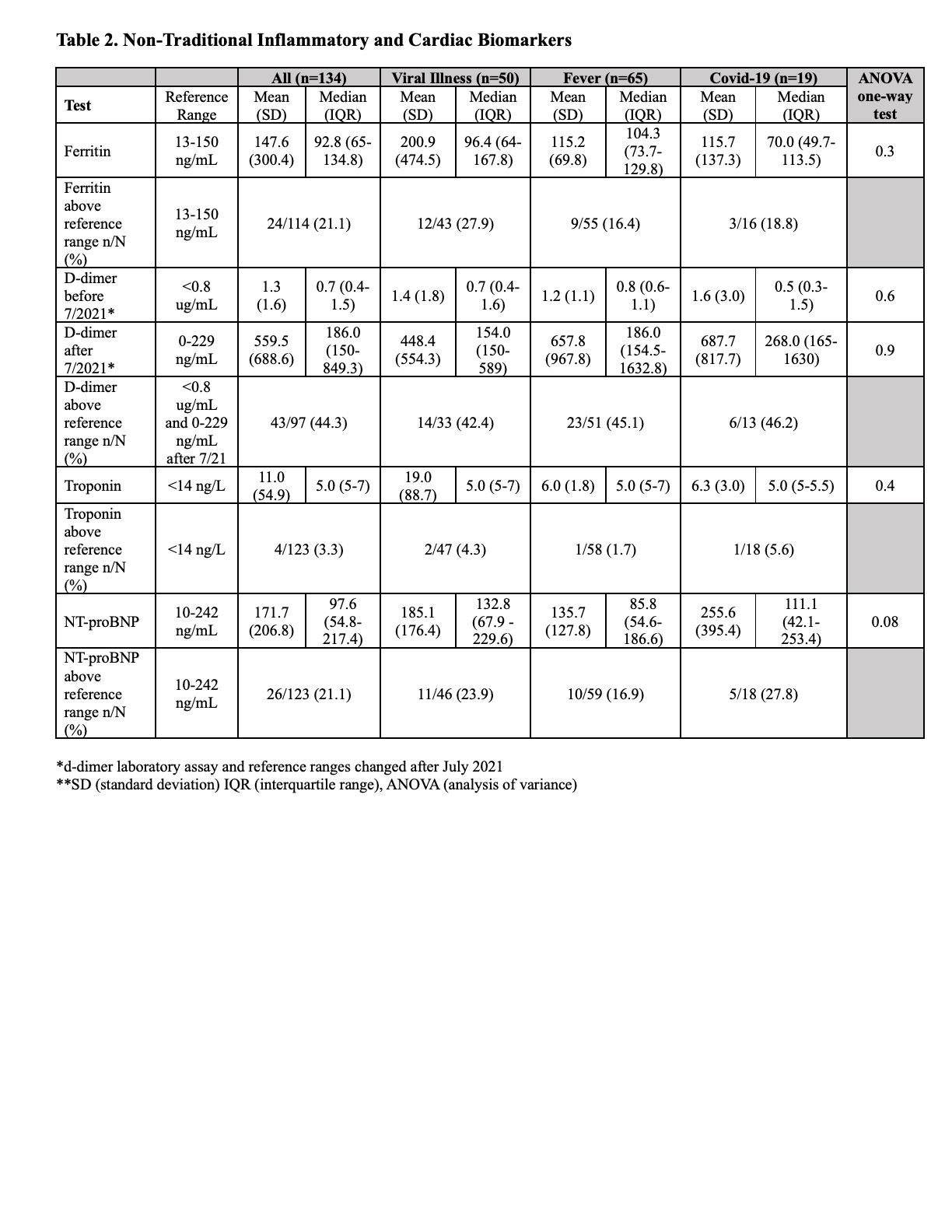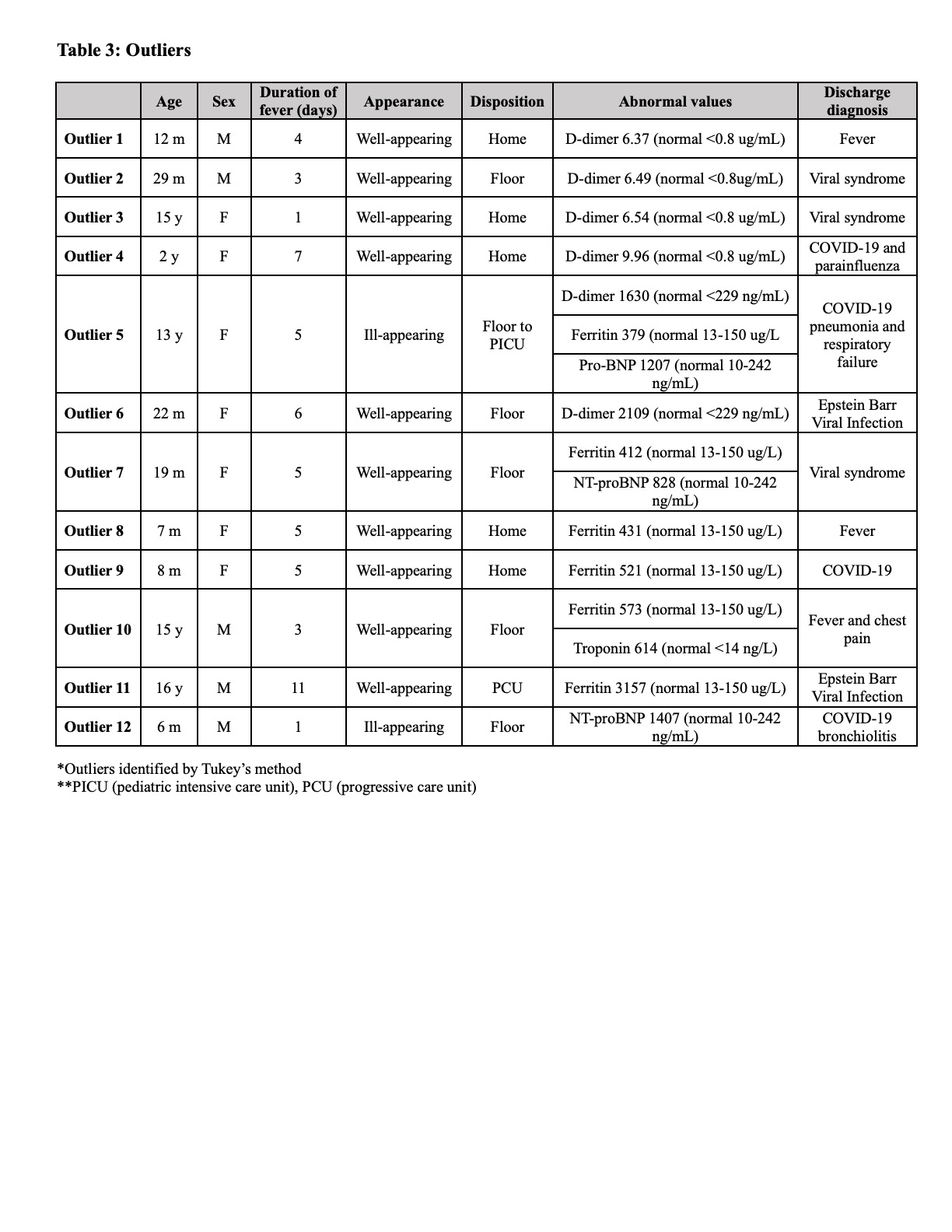Emergency Medicine
Session: Emergency Medicine 4: Infections
108 - Laboratory Profile of Non-Traditional Biomarkers of Inflammation in Children Presenting to the Emergency Department with Fever
Saturday, May 4, 2024
3:30 PM - 6:00 PM ET
Poster Number: 108
Publication Number: 108.1418
Publication Number: 108.1418

Danielle Steinberg, Medical Doctor (she/her/hers)
Pediatrics Resident
NewYork-Presbyterian Morgan Stanley Children's Hospital
NYC, New York, United States
Presenting Author(s)
Background: During the period when multi-system inflammatory syndrome in children (MIS-C) was prevalent, clinicians frequently obtained a broad laboratory evaluation, including non-traditional inflammatory and cardiac biomarkers in children with fever, the majority of whom did not have MIS-C. There are little data describing ranges of expected values for these biomarkers in otherwise healthy febrile children with a viral or non-specific illness.
Objective: To describe the distribution of laboratory values for non-traditional inflammatory and cardiac biomarkers in otherwise healthy children presenting to the pediatric emergency department (PED) with fever and viral or non-specific illness.
Design/Methods: Single-center retrospective study of otherwise healthy children 3 months-20 years presenting to PED with fever who had a laboratory evaluation for MIS-C between 4/15/20-1/24/22. Patients were identified from two sources: a subspecialty database and retrospective review of PED patients with an NT-pro-b-natriuretic peptide (NT-proBNP) or troponin obtained, which was a standard aspect of MIS-C evaluation. We excluded children with medical co-morbidities, MIS-C, Kawasaki disease, or a definitive non-viral source of fever. We summarized D-dimer, ferritin, troponin, and NT-proBNP distributions using descriptive statistics. We used one-way analysis of variance (ANOVA) testing to analyze for differences between three disease categories: non-Covid viral illness based on nasopharyngeal respiratory panel, fever not otherwise specified (NOS; panel negative), and COVID-19.
Results: 610 patients were screened, of which we excluded 476. Of 134 eligible patients, 50, 65, and 19 were categorized as viral illness, fever NOS, and COVID-19, respectively. Table 1 details patient demographics and characteristics. Table 2 notes median values for ferritin, d-dimer, troponin, and NT-proBNP, with all distributions skewed to lower values; medians were all within our institution's laboratory reference range. However, 44% of D-dimer and 21% of NT-proBNP and ferritin levels were above the reference range; only 3.3% of troponin levels were outside the range. ANOVA testing revealed no statistical differences between disease categories (p < 0.05). Table 3 describes patients with extreme outlier values based on Tukey’s method, noting more frequent outlier values for D-dimer and ferritin.
Conclusion(s): Otherwise healthy children presenting to the PED with a fever and viral or non-specific illnesses typically have normal troponin levels, though a substantial proportion may have abnormal D-dimer levels.
.jpg)


